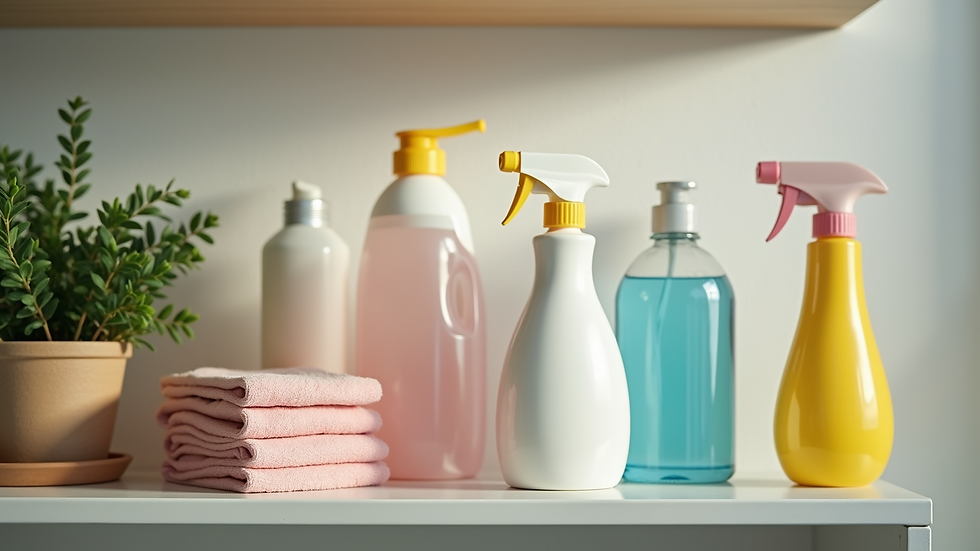Top Common Household Dangers You Should Be Aware Of and Their Startling Statistics
- SheepDog Society Admin.

- Sep 22, 2025
- 4 min read
Every day in our homes, we face dangers that we might not even think about. While we consider our houses safe places, they can host a range of risks that threaten our health and well-being. By understanding these common household dangers and the eye-opening statistics associated with them, we can take meaningful steps to keep ourselves and our loved ones safe.
In this blog post, we will take a closer look at prevalent household dangers, supported by statistics that stress the importance of safety in our homes.
Fire Hazards
Fires are one of the most alarming threats in any household. According to the National Fire Protection Association (NFPA), U.S. fire departments responded to roughly 1.3 million fires in 2019, which tragically resulted in over 3,700 civilian deaths and more than 15,000 injuries.
Top causes of household fires include:
Cooking: Left unattended, cooking can lead to disaster. In fact, cooking equipment is involved in 49% of home fires.
Heating Equipment: Devices like space heaters can ignite nearby flammable materials, accounting for 15% of household fires.
Electrical Malfunctions: Faulty wiring and overloads are key culprits, leading to 6% of home fires.
To reduce fire risks, be sure to install smoke detectors throughout your home. Check their functionality, avoid leaving cooking unattended, and always have a fire extinguisher accessible.

Poisoning Risks
Poisoning is a serious but often overlooked household danger. According to the American Association of Poison Control Centers, there are more than 2.1 million poison exposures annually in the United States.
Household items that can lead to poisoning include:
Cleaning Products: Many cleaners contain harmful chemicals. Misuse can lead to serious health issues.
Medications: Incorrect storage or dosing can result in accidental overdoses.
Carbon Monoxide: This invisible gas can stem from malfunctioning appliances. The CDC reports that over 400 people die from unintentional carbon monoxide poisoning each year.
To prevent poisoning, store harmful substances out of reach of children, use child-proof caps on medications, and install carbon monoxide detectors in your living spaces.

Falls
Falls rank as a leading cause of injury at home, especially for older adults. The CDC states that one in four older adults falls each year, leading to serious health complications, including fractures and head injuries.
Common fall triggers include:
Cluttered Walkways: Items on the floor can create dangerous tripping hazards.
Wet Surfaces: Spills and slick floors can easily cause slips.
Poor Lighting: Insufficient lighting can mask obstacles that may trip you up.
To minimize the risk of falls, keep walkways tidy, clean up spills quickly, and ensure your home is well-lit.
Choking Hazards
Choking poses a significant danger, particularly for young children. The American Academy of Pediatrics emphasizes that choking is one of the leading causes of injury and death in children under the age of four.
Common choking threats include:
Food: Items like grapes, nuts, and popcorn can be especially hazardous for young children.
Small Objects: Toys with tiny parts, coins, or batteries can pose a choking risk.
To prevent choking incidents, supervise children at mealtime, cut food into small, manageable pieces, and keep small objects safely away.
Electrical Dangers
Electrical issues can be very dangerous in the home. The NFPA reports that electrical failures are involved in about 13% of household fires.
Main electrical hazards include:
Overloaded Outlets: Plugging in too many devices can overheat and spark fires.
Frayed Wires: Damaged cords can expose wires, presenting shock hazards.
Improper Use of Extension Cords: Using them as a permanent solution increases the risk for electrical fires.
To maintain electrical safety, avoid overloading outlets, regularly check cords for damage, and use extension cords only temporarily.
Mold and Mildew
Mold and mildew can lead to serious health issues, particularly for those with respiratory conditions. The World Health Organization (WHO) warns that mold exposure can result in health problems such as allergies and respiratory infections.
Main causes of mold growth include:
Excess Moisture: Leaks, high humidity, and inadequate ventilation can encourage mold development.
Water Damage: Flooding or leaks require prompt repair to stop mold infestations.
To keep mold at bay, fix leaks quickly, use dehumidifiers in damp areas, and ensure proper ventilation in bathrooms and kitchens.
Household Chemicals
Many everyday household chemicals can pose dangers if not stored or used correctly. The Environmental Protection Agency (EPA) emphasizes that certain chemicals can lead to respiratory issues, skin irritation, and more.
Common household chemicals include:
Pesticides: These can be harmful both for humans and pets if ingested or inhaled.
Paints and Solvents: Fumes from these substances can cause health issues.
To reduce risks, always read labels carefully, follow safety instructions, keep chemicals in their original containers, and store them out of children’s reach.
Prioritizing Safety in Your Home
Being aware of common household dangers is the crucial first step towards creating a safer living space. From fire hazards to poisoning risks, understanding these statistics reminds us how important safety is.
By putting safety practices in place—like installing smoke detectors, storing hazardous materials properly, and maintaining a tidy home—you can significantly lower the risks linked with these household dangers.
Remember, home safety is more than awareness. It is about taking practical steps to ensure your home remains a secure haven for everyone. Stay informed, vigilant, and always prioritize safety in your daily life.







Comments